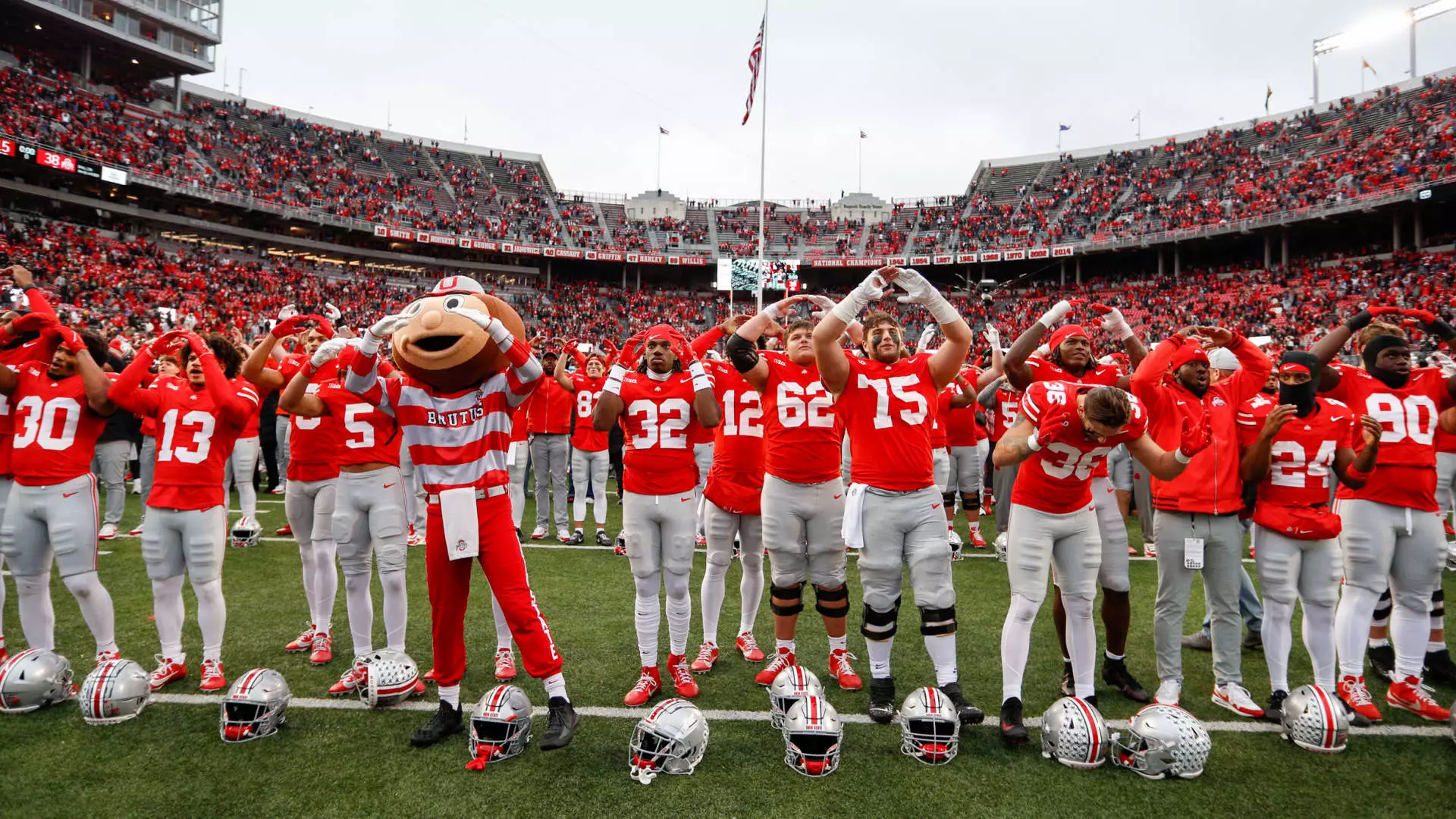The landscape of college sports has evolved into a lucrative industry, with major programs amassing billions in revenue each year. This shift is drawing the attention of private investors eager to capitalize on this potential financial goldmine. The pressing question arises: what is the true worth of a college sports program? To shed light on this issue, a thorough analysis conducted by CNBC reveals a structured ranking of the 75 most valuable college athletic programs, generating insights into the financial mechanics of this sector. This ranking specifically focuses on institutions within the NCAA Football Bowl Subdivision (FBS), carefully excluding military academies.
At the pinnacle of this hierarchy is Ohio State University, boasting an estimated valuation of $1.27 billion. With a staggering revenue of $280 million in 2023, it stands as the leader among educational athletic programs. Several influential factors contribute to the Buckeyes’s preeminence in this evaluation— a robust alumni network exceeding 600,000, a fan base that spans over 11 million individuals, and a remarkable booster contribution of nearly $60 million last year. Furthermore, Ohio State’s football games regularly attract crowds of over 100,000, reinforcing its powerful market presence.
These metrics illustrate not only the financial power of the Buckeyes but the way in which successful athletic programs can transform their colleges into revenue-generating vessels. The demonstrated engagement of alumni and supporters, coupled with a strong on-field performance, creates an immensely appealing formula for potential investors.
Delving deeper, it becomes evident that the rankings of collegiate athletic programs predominantly reflect the strength of their respective conferences. Schools within the Southeastern Conference (SEC) and the Big Ten often outrank others due in large part to the substantial media rights deals afforded to these conferences. The SEC, with a whopping valuation of $13.3 billion, marks an average value per institution of approximately $832 million, while the Big Ten closely follows at $13.2 billion, averaging $734 million per program.
Other conferences, such as the Atlantic Coast Conference (ACC) valued at $9.6 billion and the Big 12 at $6.7 billion, reveal an interesting contrast—the robust financial ecosystem surrounding the SEC and Big Ten appears unmatched. Understanding these dynamics is crucial for stakeholders considering investments, primarily because they are indicative of future revenue generation capabilities.
The evaluations made to compile this list were facilitated by the expertise of professionals like Jason Belzer, publisher of AthleticDirectorU, a specialized entity focused on advising universities regarding name, image, and likeness (NIL) agreements. The financial data utilized comes from credible sources, namely the Department of Education’s Equity in Athletics Data Analysis and the Knight Commission on Intercollegiate Athletics, ensuring that the revenue figures are accurate and representative of the fiscal scenario.
Belzer’s methodology begins with a baseline revenue multiple of four for all institutions and modifies this multiple based on a variety of factors. These include conference affiliation, estimated NIL spending, university subsidies, alumni numbers, and other elements that could enhance future profitability. This multi-faceted approach highlights the complexity involved in valuing athletic programs and underscores the intricate formula for success in college sports.
As college sports continue to thrive as a massive financial enterprise, understanding the valuations of athletic programs becomes increasingly vital for investors and universities alike. This nuanced examination reveals not just the powerhouses like Ohio State but also provides a roadmap for other programs aspiring to attain similar financial success. The rankings presented also serve as a pointed reminder of the necessity for colleges to nurture relationships with alumni and fans while remaining strategically aligned within their conferences.
Given the ever-evolving nature of college athletics and its associated revenues, stakeholders must remain vigilant. The intricate interplay of market dynamics means that today’s champions may face significant challenges tomorrow, pointing to a need for ongoing adaptation and strategic planning. As investment interest grows, this sector will undoubtedly continue to attract scholarly and financial scrutiny, shaping the future of college sports as a hallmark of American culture and economy.

Leave a Reply